General Questions
The most frequently asked questions regarding The KLF. This is where you should start reading about the work of Bill Drummond and Jimmy Cauty to explore the History of the JAMS.
From when they first paired up in 1987, to when the KLF split in 1992 (and even beyond), Drummond and Cauty progressed through many varying musical styles in their commercial releases.
There are never ending discussions about how good or bad a certain phase of their history was. You should be aware that Drummond and Cauty had very short attention spans and changed musical direction more often than other bands changed their underwear. You don’t have to like everything they’ve done, but have an open mind and remember the context of the time they produced those songs.
Here’s a short guide to the various incarnations:
1987-1988 as The JAMs
Punk ethic, political Scottish rap, blatant cut-n-paste sampling, primitive hip-hop, but they gradually got better at it with their second LP. Huge influence on Pop Will Eat Itself.
1987-1989 as Disco 2000
Started as a Cauty solo project. Cheesy pop. Resembled later JAMs singles like Burn The Bastards, while influencing the later following pre-Stadium House KLF records.
1988 as The Timelords
An exercise in nauseating novelty, charting a number one house record Doctorin’ the Tardis and explaining how they did it in The Manual. Huge influence on Edelweiss who in fact got a Number One hit by following the Golden Rules.
1988-1990 as The KLF
Twin styles of acid trance house and ambient soundscapes, very difficult to find the records, but check out the Chill Out album, which is still in print in the USA. The rave stuff was an influence on Black Box, and other Italians, while the ambient stuff practically started the whole 90’s ambient scene along with The Orb.
They also recorded various songs for their soundtrack of the “White Room” movie but never released them in their original form. Trying to mimic the style of the Pet Shop Boys around that time with their single Kylie Said To Jason.
1990-1992 as The KLF
Their early singles and huge parts of the White Room soundtrack were remixed and re-remixed and re-re-re-remixed into the Stadium House pop permutations you have probably heard on the radio. Influence on Blue Pearl, Utah Saints, Nomad etc.
1990-1991 as The JAMS
While gaining success with their KLF releases, they teamed up once more as the JAMS and released a remixed version of their previous promo It’s Grim Up North, a first glimpse of the always-scheduled-and-delayed Black Room album. Dark electronic.
1992 as The KLF
They started working on thrash guitar heavy-metal techno dance together with Extreme Noise Terror but scrapped most of the sessions. Could this have been yet another new musical style? Possible influence on God Machine and Kerosene (who both did a KLF cover).
1993-1995 as K Foundation
Like all good post-modernists they are branching out into interdisciplinary arts, releasing their only single K Cera Cera, a limited release in Israel/Palestine to celebrate the peace accord. A mix of orchestral sound and Russian choir.
1995 as One World Orchestra
They sneaked out of retirement for one day to record a hastily constructed orchestral/drum’n’bass track for the much hyped “Help! (Artists for War Child)” LP.
1997 as 2K
Celebrating the 10th birthday of The JAMS, they released Fuck The Millennium as a statement against the more and more growing Y2K frenzy and, according to Drummond, “to celebrate the crapness of comebacks”. Somewhere between early 90’s acid-pop, Chemical Brothers-style big beat and a 40-piece brass band.
2017 as The JAMs
In 2017 The JAMs came out of retirement once more to announce the release of 2023, as well as their foray into cremation and pyramid building.
Record Details
Differences between international releases. the recording of Chill Out and the other sound of Mu, covering the early Brilliant releases as well as the K Foundation and the One World Orchestra.
Bootlegs
Bootlegs of rare KLF releases have been released aplenty over the time. While some of them can be easily spotted, others are hard to distinguish from the original issues.
What does […] sound like?
Some of the more rare and obscure tracks and projects can be hard to track down, so these should give you an idea of what to expect.
Bill Drummond’s 1986 solo LP on Creation records is a mixed bag of country-rock tunes, awful singing, up tempo instrumentals, a couple of good pop songs, the ‘particularly funny’ old English ballad type ‘Julian Cope Is Dead’, and a Scottish Nationalist poem ‘Such A Parcel Of Rogues In A Nation’ read by his father, the Reverend Jack Drummond. It features most of Australian rock band ‘The Triffids’ as his backing band, along with Kyiem Lui, Graham Lee, Nick Coler and the ‘Voice Of The Beehive’ girls on backing vocals. Its probably not worth spending a lot of money on if you only like dance music, try looking out for it in used record bins or remaindered records shops.
Here’s some reviews by list members:
It’s almost comical, actually. Bill strums his guitar and sings country & western ballads in a thick Scottish accent. It’s not remarkable except for its collectible value as a KLF member’s solo record.
It’s a country album, with lots of steel guitars. The song ‘Julian Cope is dead’ is particularly funny, the only non-non-country track on the album; it’s a traditional English middle-ages ballad. The song about Ian McCulloch is called ‘Ballad for a sex god’, but I have no idea about the lyrics, since he sings with a very thick accent. The record is of course a must for any KLF-collector.
I think that you are wrong. I admit I have only heard one song off the album (‘The King Of Joy’), but that was definitely NOT a country & western ballad. It is one of the best pop songs I have heard in a long time. If you don’t like the songs, then buy it because it is fun to listen to all the allusions Bill pops in about his career and his exploits.
Other Creative Exploits
The never ending list of things, events and projects from, around, before and after The KLF – from the never finished White Room Motion Picture to the infamous burning of a million pounds on the Isle of Jura.
Other Creative Exploits
In November 1992, Drummond and friend Mark Manning (also known as failed rock star Zodiac Mindwarp, furthermore known as Zed or Z) decided to save the world by planting a photo of Elvis at the North Pole, with the idea that his soul would seep down across the world on the ley lines and bring about world peace. The two were also hoping to find Baby Jesus within themselves. So they and Gimpo to drive to the North Pole. They got all the way up to Lapland, almost freezing to death, before realising that the road runs out and the unfrozen Arctic Sea starts. However they did meet the keeper of the ‘most northerly lighthouse in the world’ so they presented the photo to him and then came home.
Drummond and Manning decided to write a book about their trip called initially ‘Bill and Zed’s Excellent Adventure’ or ‘The Lighthouse At The Top Of The World’. They decided that it would be a limited edition of one, hand-transcribed and illustrated by them (they were both artists after all) and bound in 18th century reindeer leather which had been recovered from a shipwreck (!!) and which Drummond bought from an auction for some outrageous price. The idea being that before the invention of the printing press books were so rare and special that an interested reader would make a pilgrimage across Europe to see a book. In this age of information technology, they wanted to re-capture some of that magic. So the book was to be displayed in the specially purchased Curfew Tower, which was built as a prison for 19th century dissidents, in Cushendall on the East coast of Northern Ireland. Unfortunately they hadn’t considered just how long it would take to hand-write and illustrate, and the project was put on hold. Then, in October 1996, it was somewhat surprisingly published in paperback by Penguin and is now widely available as ‘Bad Wisdom’.
The style of the book somewhat reflects that of Hunter S. Thompson (author of ‘Fear and Loathing in Las Vegas’). The sleeve reviews are by Jarvis Cocker from Pulp: “The truth, no matter how uncomfortable, cannot help but be beautiful – this is a very beautiful book” and subversive writer/artist Stewart Home: “This is a brilliant anti-novel with a pedigree running from Swift and de Sade to Dada and Burroughs. Blunt, shocking, uncomfortable. A future underground classic.”
There is no dedication, and it all begins on Monday 2 November 1992 the day Bill’n’Z’n’Gimpo set off for Helsinki. The text alternates between Drummond and Manning. Drummond just recounts the detail of the events, presumably truthfully, and describes people in his own often wonderful way. He also writes relfectively about life, his past (and the KLF and it’s demise) and various things that irk him about the world, eg. MTV. In the meantime Manning is writing wild Hunter S Thompson fiction, wild horrific trips of fancy based around the real life characters, but presumably with some basis in truth, like he’s tripping all the time and he sees everything exaggerated. The interplay between the two accounts is very interesting and works very well most of the time. You start to recognise the events or objects or people in real life (i.e. Bill’s account) that Z bases his fantasy’s around. Bill even writes about Z writing which sheds further light … one page he’s bored and not writing anything … the next he’s scribbling away furiously in the back of the car chuckling demonically … the next he’s acting out the characters he’s created, entertaining Gimpo and Bill.
To publicise the book Bill and Mark (and ‘tour manager-cum-support act’ Chris Brook; Gimpo also went along, but played no part in the actual performances) undertook a series of public performances (and book signings) initially starting off with a date in New York then at various venues in towns and cities across the UK. From the event flyer:
“This performance is adapted form the novel Bad Wisdom which is based on Drummond and Manning’s journey to the North Pole in the winter of 1992. The performance reflects the double narrative of the book with Manning and Drummond relating their separate but intertwining versions of the story.”
They react a rehearsed performance, with Zed standing behind an ornate brass lectern which Bill picked up from a church salvage yard for 300 quid, and Bill using “Stig of the Dump’s bird table – a crazed scaffold of fence posts and sycamore stumps”.
Mark Radcliffe’s (late) late-night show on Radio One featured Bill and Mark reading from their book, and sound-clips of these quotes can be found as hidden tracks on ‘Lost Sounds Of Mu 2’.
They also made an appearance on MTV’s Hanging Out, which is pretty surprising considering Bill’s anti-MTV stance in the book. This may be related to the following anecdote from one well-connected list member: “Okay. This is gospel – it came from a friend who works there and saw it happen. A guy who works in transmission at MTV in London found a black bag in the street last week. He took it to work, and from the contents (which I only know to include several sheafs of A4 and six copies of Bad Wisdom) deduced that the bag belonged to none other than…Bill Drummond! So a contact number was found, and Bill had to turn up at MTV to reclaim the bag!!!! According to my friend, he was scowling something horrid, and was rather terse with whoever it was he talked to (so same as ever there then!).”
In May 1996 Bill and Mark went to the Congo to write the next chapter in the search for the Lost Chord. Bill said the next chapter will probably be out around 1998, but it took them seven more years to get their second book finished and published. Wild Highway got released in August 2005, incorporating the same writing style as Bad Wisdom before.
During an online interview session with The Guardian Bill told that a third book was planned to be set in South America, while at other occasions the book was meant to take them to the moon. However, the third journey is yet to happen.
A Bible of Dreams is a book of images by Mark Manning (Zodiac Mindwarp), largely photomontages, with text by Bill Drummond. It is described as “a visual poem composed by MS Manning”, with Drummond giving “a personal interpretation of the poem” in a commentary, along with a biographical background piece. The colour plates are reproductions of a picture collage pieced together by Manning in a scrapbook during a 1992 Scandinavian tour, and sent to Drummond shortly after tour ended. Drummond found himself repeatedly drawn to its contents, each perusal revealing more, “like a collection of good verse”. Manning was horrified when he suggested publishing it.
The book is published by The Curfew Press, the two men’s publishing company based in The Curfew Tower. It’s available only in a limited edition of 200 numbered copies, signed by Drummond and Manning, costing UKP500. It is bound in blue Nigerian goatskin, each page hand-printed and stitched into a calf-leather spine, and comes in a blue moire silk slipcase. It’s not so much an expensive book as an average work of art. They have sold a few to “universities and the like” If you want one and have a “large amount of money” to spare, contact the Curfew Press.
Zed’s art in The Curfew Press’ A Bible Of Dreams looks like it’s deliberately fallen. The collected trash of a rock’n’roll degenerate, the collages entangle images from heavy metal, pornography, Nazi Germany and Disney. Drummond’s text suggests they represent an archetypal rock’n’roll headspace: a place where sleaze, ambition, rebellion and religion meet. Zed reckons that just by sampling these images he’s raising them from the base to the divine. And there are points in his commentary where Bill finds a postitivity in porn. Maybe Zed and Drummond are examining cultural inequality. Wondering why some kinds of art are raised over others. Which is no great surprise from two men who work in rock or pop, an area of culture that is often ignored by art critics.
Drummond and Manning undertook a series of interviews to promote the book, in i-D, Vox and GQ magazines. In one interview Manning said that the text of the book was available on the Internet, then laughed. List members have looked far and wide and have found no trace of it. It is most likely that this statement was a deliberate wide-up for us and people like us, and an Internet-hype backlash joke. We don’t think it is online.
Merchandise
From T-Shirts to Books, from Promo Videos to home-made DVDs – there have been many non-CD releases and collectibles during all those years. Read more about them and find out wether they are still available.
Miscellaneous
Questions that didn’t fit into any other category so we had to create one for them.

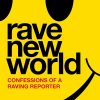
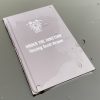
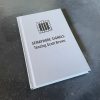
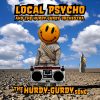
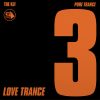
Recent Comments